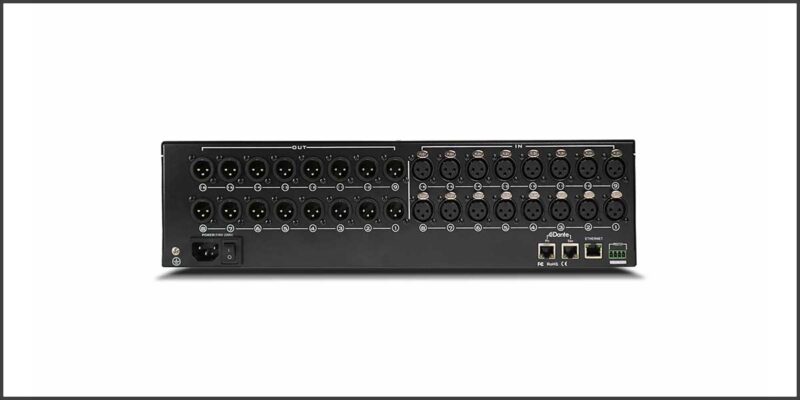If You Build It, They Will Hack It
 There’s a great quote from an article by John Chambers, CEO of Cisco Systems, about hacking into systems: “There are two types of companies: Those who have been hacked, and those who don’t yet know they have been hacked.”
There’s a great quote from an article by John Chambers, CEO of Cisco Systems, about hacking into systems: “There are two types of companies: Those who have been hacked, and those who don’t yet know they have been hacked.”
While Mr. Chambers point is about securing data, networks, and storage, the quote prompted a different line of thinking on my part: why don’t manufacturers make it easier to hack into their systems?
Please Hack Me
Why don’t manufacturers make Software Developer Kits (SDKs) and open up the code? There are potential safety reasons with certain technologies, but aside from acceptable parameters (limits) on code variables, it would seem the vast majority of technology from audio, video and lighting manufacturers could be modified and enhanced beyond the forethought of the design engineers.
Hackers have been hacking hardware, firmware and software for years, so why not actually encourage new and clever ways to leverage AVL technology? It isn’t reasonable to think that the engineers responsible for creating the next audio digital signal processor or moving light fixture or streaming video device can conceive of every possible application of the technology. In fact, the trade pubs frequently highlight new and shrewd uses as case studies; clearly, the hunger is for less of the inane and more of the creatively insane.
Hackathon for AVL
Wikipedia, my favorite layman’s dictionary, describes a Hackathon in a way that just begs the AVL industry manufacturers to do it:
A hackathon is an event in which computer programmers and others involved in software development, including graphic designers, interface designers and project managers, collaborate intensively on software projects… Hackathons typically last between a day and a week. Some hackathons are intended simply for educational or social purposes, although in many cases the goal is to create usable software. Hackathons tend to have a specific focus, which can include the programming language used, the operating system, an application, an API, or the subject and the demographic group of the programmers.
Having worked for two firms that invested heavily in software development, I’ve witnesses Hackathons firsthand and I’ve seen the benefits of paying employees to play and create in an anything-but-business-as-usual week of focused inspiration. The results were a mix of off-the-roadmap new products and entirely new ways of solving old problems where the outcomes made a difference in the businesses.
It would be fascinating, for example, to see a hackathon at LDI for expanding upon the DMX protocol. How cool would it be to have manufacturers provide state-of-the-art technology in a section of the exhibit hall where hackers could come and apply what they’ve created beforehand – or during the show – and demonstrate it to the mix of end-users, manufacturers, integrators, consultants, rep firms, and press that fills the exhibit hall?
If You Build It, They Will Hack It
A friend of mine was recently interviewing for an audio job at a large organization when they asked him to weigh in on his opinion of MADI versus DANTE. What if he didn’t have to choose? What would happen if transport protocols for audio were a mashup in an open source environment? These formats are going to be replaced one day, just as surely as CobraNet and EtherSound, so why not let the users hack into existence the next flavor for digital audio?
In the online world, Application Program Interface (APIs) are the ‘controlled access’ method of extending the functionality of hardware and software to share, control, or communicate with other technologies that are often far beyond the intended use of the original developers. Tools like Zapier exist solely to help bridge the gaps of API functionality between disparate tools to allow for the sharing of data. IFTTT provides a similar digital bridge for automating the repetitive tasks and actions of apps. The third party development community will always fill a void when the tools make it possible to share access.
Push The Industry
The fuzzy lines between Information Technology and AVL continue to blur. The integration of data, networks, and platforms is only accelerating, so who will be the industry leaders that open up the future through SDKs and APIs and open source code? End users will flock to those who innovate past their technology and into the hands of this technology community.
Specific to the house of worship market, the end-users are already hobbyists, so the party has already started. Innovation can and will come from places manufacturers simply do not expect — including churches. If you build it, they will hack it.
Which manufacturers have already started down this path? Which ones do you want to see dive in? Share your views and links in the comments below.





